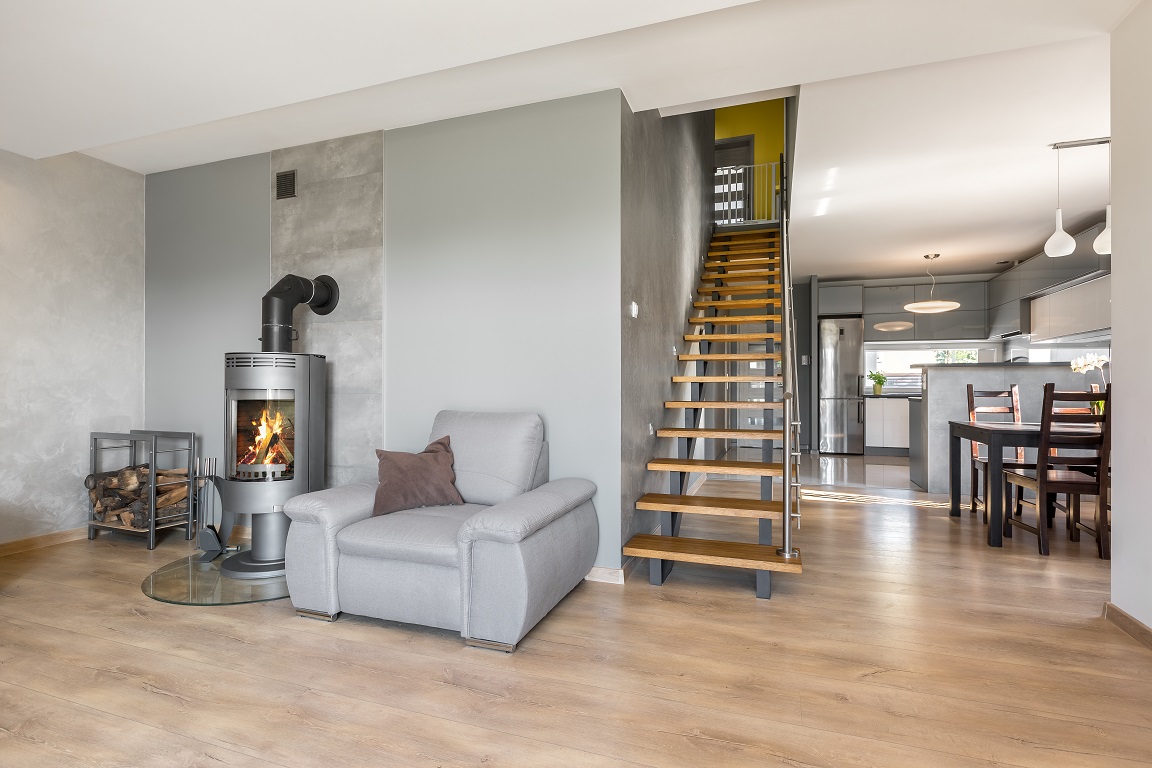
Offering both flexibility and freedom to alter a space as necessary, it is no wonder that the popularity of open plan layouts has increased in recent years. There are multiple benefits to the creation of large open spaces, including the potential for significant energy savings due to more natural light and a more social, collaborative environment from the lack of dividing walls.
Unfortunately, should a fire break out in an open plan environment, the spread of smoke and flames is much more rapid than in a smaller or compartmentalised area. The most severe risk to occupants during a fire is inhalation of gas, smoke or toxic fumes which can be reduced through containment and protecting evacuation routes with the integration of fire-resistant barriers into a building’s design.
As mentioned, the spread of fire in these spaces could be increased by the lack of physical barriers. Therefore, active fire protection such as smoke alarms and sprinkler systems should be used in conjunction with passive fire protection like fire doors and fire curtain systems to ensure compliance not only with fire regulations but to also offer maximum levels of safety in the event of a fire. The issues highlighted with open plan layouts need to be addressed for a building to adhere to Approved Document B.
Fire curtains
Open plan spaces pose specific challenges because it is impossible to use fire doors due to the absence of walls. Where fire doors cannot be implemented, fire curtains should be installed. A fire curtain is a highly robust piece of fire-resistant material which is stored discretely in a steel headbox within the ceiling. In the event of a fire, the curtain is released by a trigger from a fire alarm or local detector, causing it to fall vertically via gravity. Once deployed, it obscures the space, acting as a crucial physical barrier between the fire and the escape routes. Fire curtains can be installed in a number of different locations and can be used to replace a non-load bearing wall and fire-rated glazing. In open plan layouts, the installation of a fire curtain enables a building to still meet the relevant regulations.
The main purpose of a fire-resistant barrier, such as curtains, is to suppress the growth and development of flames and smoke within a building, to protect escape routes and help minimise the risk to human life. Open spaces and critical escape routes can use fire curtains to control the spread of smoke and fire, which could spread more rapidly, for example through a lift shaft.
There is a growing global demand for the ability to see through a fire barrier. In an emergency, first responders are required to evacuate individuals from a building, therefore, fire curtains with a vision panel are likely to be a huge aid.
Certification
A fire curtain is designed to withstand the heat and effects of a fire for a specific length of time. The required duration of resistance enables an effective evacuation with enough time to make the necessary checks of the building in order to minimise the risk to human life.
For the fire curtain industry, BS 8524 is the only fire curtain standard, providing comprehensive guidance on specification and installation. Aimed at specifiers, manufacturers, installers and facilities managers, the standard covers all aspects of the fire curtain performance and functionality, as well as a third-party approved installation and ongoing maintenance of the fire curtain, which must be achieved to illustrate competence and quality.
A key part of BS 8524, and one of the essential nine annexes, is the fire test BS EN 1634-1. This is an important test standard to look for in terms of compliance and product fire resistance or integrity. With integrity of components used in building construction facing increased scrutiny, there is a higher degree of focus on the integrity of every product when exposed to fire. This certification provides assurance to end users and building occupiers that the product has been subjected to, and passed thorough third-party testing against a set of rigorous criteria.
The benefits of having a vision panel in fire-resistant barriers are clear. However, where they appear in curtains there must be no compromise on compliance, quality and the product’s resistance level. Choosing products that are certified and have undergone thorough testing provides assurance to specifiers and facilities managers that the fire protection measures in place are of the highest standard to preserve human life.
Gary Strong, RICS global building standards director, comments: “Fire curtains are increasingly being specified in open plan spaces. Fire engineering modelling of escape behaviour should be considered, to ensure a fire curtain does not deploy too early thus hindering escape.”
“A fire curtain is designed to withstand the heat and effects of a fire for a specific length of time”
